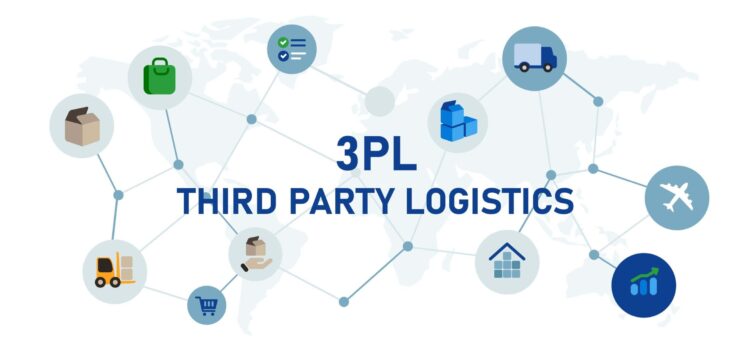
If you’re involved in supply chain management or business operations, you might have come across the term 3PL, or third-party logistics. But what exactly does it mean, and how does it work? Let’s discuss the concept in detail to understand its significance in modern business.
What Is 3PL?
Third-party logistics, or 3PL, refers to outsourcing logistics services to an external provider. These services can range from warehousing and transportation to order fulfillment and distribution. Essentially, a 3PL company takes on the responsibility of managing various aspects of the supply chain, allowing businesses to focus on their core competencies.
The scope of 3PL can vary widely. A 3PL provider might offer a single service, such as transportation, or a comprehensive package that includes everything from procurement to fulfillment. This flexibility makes 3PL an attractive option for companies looking to streamline operations and reduce costs.
How 3PL Works: An Example
To illustrate how 3PL works, consider a book publisher. The publisher’s expertise is in creating and producing books, but it might not want to manage the logistics of storing, packing, and shipping those books to customers. This is where 3PL comes in.
In this scenario, the publisher could hire a fulfillment center to handle online orders and a trucking company to transport the books. These third-party providers take care of the logistics, allowing the publisher to focus on writing and producing books. By outsourcing these tasks, the publisher can save on overhead costs and avoid the complexity of managing logistics internally.
The Evolution and Growth of 3PL
The concept of a third-party logistics company has evolved, with its origins dating back several decades. The Council of Supply Chain Management Professionals (CSCMP) traces the first use of the term “3PL” to the early 1970s when it was used to describe intermodal marketing companies in transportation contracts. Before this, transportation contracts typically involved only two parties: the shipper and the carrier.
The Motor Carrier Act of 1980, which deregulated the trucking industry, played a significant role in the growth of 3PL. It led to reduced trucking rates and increased competition, creating an environment where third-party logistics could thrive. By the 1990s, as technology advanced and the internet became more prevalent, 3PL gained more traction and visibility in the business world.
The 2008 Consumer Product Safety Improvement Act provided a legal definition of 3PL, stating that it refers to a person or company that “solely receives, holds, or otherwise transports a consumer product in the ordinary course of business but does not take title to the product.”
Today, 3PL is a critical component of many companies’ supply chain strategies. According to a 2017 report from Armstrong & Associates, a supply chain consultancy, 90% of Fortune 500 companies in the United States rely on 3PL providers, a significant increase from the 46% reported in 2001. This growth can be attributed to the rise in e-commerce, consumer demand for faster delivery, and advancements in technology such as RFID and GPS, which provide greater supply chain visibility.
The Benefits of 3PL
Why are so many companies turning to 3PL? The primary benefit is cost savings. By outsourcing logistics tasks like packaging, warehousing, and transportation, businesses can reduce operational expenses. They don’t have to invest in warehouse space, hire additional staff, or manage complex logistics operations.
Another advantage is scalability. A 3PL provider can quickly adjust to meet changing demands. For example, if the book publisher experiences a surge in orders, the fulfillment center can scale up operations to meet the demand. This flexibility is invaluable for businesses with fluctuating needs.
3PL providers also tend to offer better performance in areas like shipping and distribution. Since they specialize in logistics, they can leverage economies of scale and advanced technology to deliver services more efficiently.
Comparing 3PL and 4PL
You might also hear about fourth-party logistics, or 4PL, when discussing 3PL. The key difference between the two lies in their roles within the supply chain. While 3PL providers manage specific outsourced services, 4PL providers oversee the entire supply chain. They act as a single point of contact for clients, coordinating and managing various 3PL activities.
In our earlier example, if the fulfillment center outsourced its shrink-wrapping and freight-weighing tasks to other companies, it would become a 4PL provider. A 4PL provider is sometimes called a lead logistics provider, reflecting its role in orchestrating multiple 3PL services.
How 3PL Differs from Freight Forwarding
Although 3PL and freight forwarding might seem similar, they have distinct differences. Freight forwarders act as intermediaries between clients and shipping companies. They don’t ship materials themselves; instead, they negotiate rates, select transportation modes, and establish shipping routes. In contrast, 3PL providers handle a broader range of services, from transportation to warehousing to fulfillment.
Another difference is responsibility. A 3PL provider is responsible for the goods being shipped, while a freight forwarder typically isn’t, as they are primarily facilitators.
Final Thoughts on 3PL
Third-party logistics is a critical aspect of modern business operations, offering cost savings, flexibility, and scalability. Whether you’re a small business looking to outsource a specific logistics task or a large corporation seeking comprehensive supply chain management, 3PL can provide the solutions you need.
As consumer demand for faster delivery and efficient logistics continues to grow, the role of 3PL will likely become even more significant. If you’re considering integrating 3PL into your business strategy, think about your specific needs and explore the various services 3PL providers offer. With the right 3PL partner, you can streamline your logistics and focus on what you do best—running your business.











